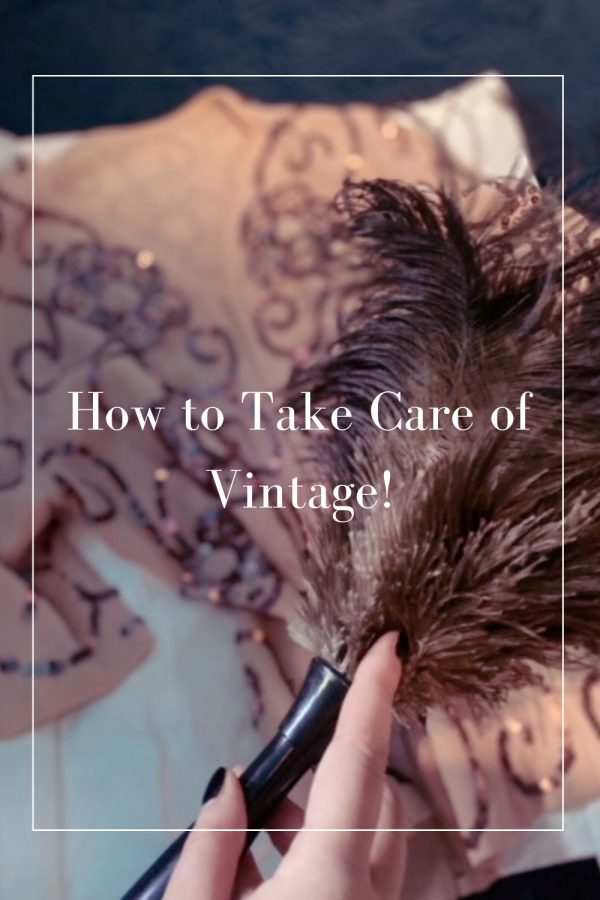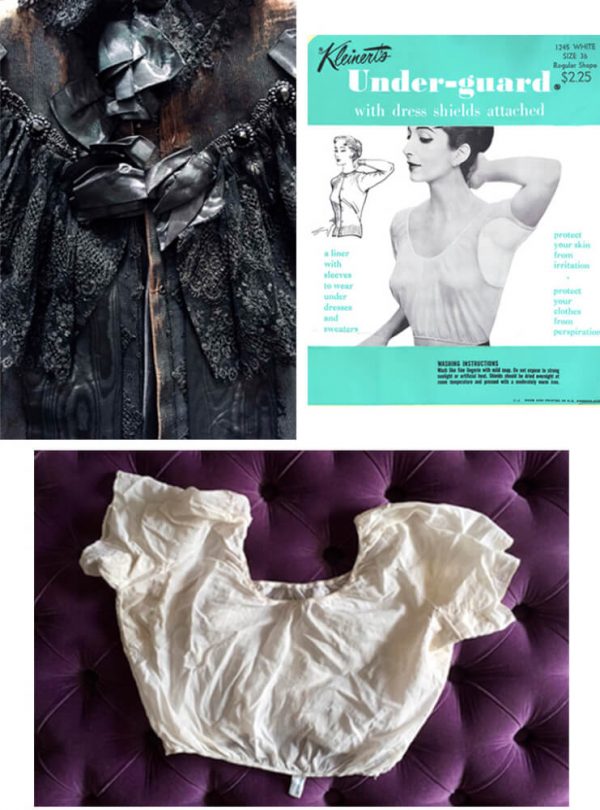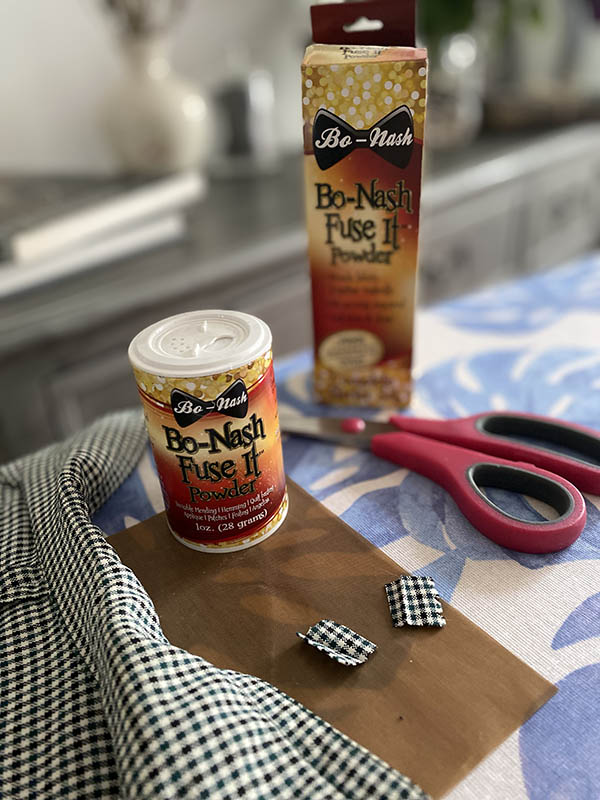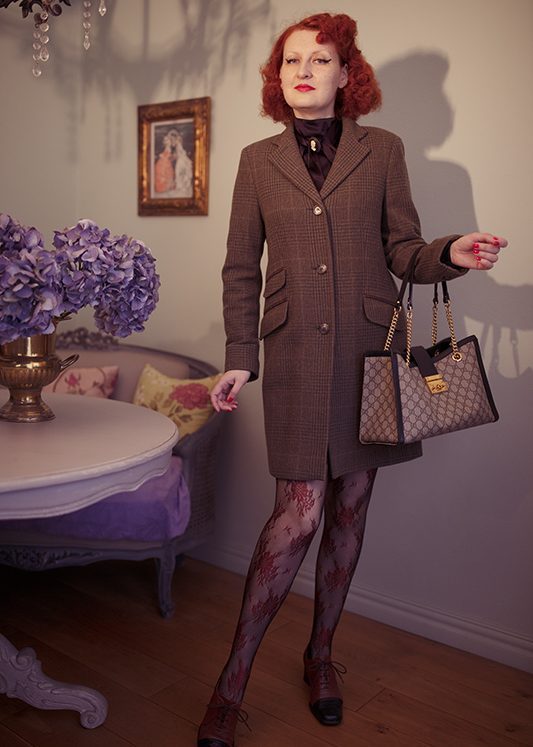How to Care for Vintage Clothes

Last updated on June 19th, 2024 at 03:58 pm
- How to Care for Vintage Clothes!
- How to Take Care of Vintage Clothes Step by Step
- Do You Hang Your Vintage Clothes The Right Way?
- The Kleinert’s dress shield is the perfect protection for your vintage clothes from sweat and deodorant!
- Learn How to Date Vintage Clothes
- Best Detergent for Delicates & Washable Vintage Clothes
- How to Care for Vintage Clothes in a Nutshell
In this article, I will provide you with useful tips and guidelines for taking care of your vintage clothes so that you can enjoy them for years to come.
Vintage clothes require special care and attention to preserve their quality and value. If like me, you are a vintage enthusiast, you might be wondering what are some common mistakes to avoid when caring for vintage clothes. Also, how can you properly store vintage garments to prevent damage? Additionally, are there specific cleaning techniques for different types of vintage fabrics? What products or tools should be used for cleaning and maintaining vintage clothing? Lastly, how can you identify and repair damage to vintage garments?
DISCLOSURE: As of October 2021, (I published this article in 2017!) I’m part of an affiliate program, and I get a small commission for purchases made through links in this post. That’s how I keep my website alive, for which I’m very grateful to you. All opinions expressed here are mine!
How to Care for Vintage Clothes!
- Learn why the dress shield is your vintage garment’s best friend
- Why use unbuffered acid-free paper
- Why hangers are dangerous
A few months ago, I was devastated to discover my favourite Victorian mourning cape, had brown spots all over. I bought the magnificent piece in near-mint condition several years earlier at a vintage fair in London.
My mistake had been to store it using a plastic garment cover. I ran out of the archival Tyvek ones, and time was of the essence as we had unexpected construction work on our apartment.
This was a crime against any antique piece of clothing but It was also an emergency. I had no choice but to protect the garment from dust.
The trouble is, I left it in the deadly plastic for longer than I would like to admit. A layer of silk deteriorated because of a reaction with the plastic.

Thankfully it’s not affecting the garment’s structure and I can still wear it.
It did make me think about how many of us vintage vixens, have had clothes damaged because of not storing them correctly or misusing them without even being aware of what we did wrong.
Also, though I know that most of us aren’t big wearers of pre-1920s clothes, I’ve consulted an expert who works for several museums and handles antique textiles and costumes daily.
The culmination of which is the bullet-point bible below, which I sincerely hope will help you to protect your valuable vintage investments from similar mistakes to that which I made.


How to Take Care of Vintage Clothes Step by Step
If you want to care for vintage clothes like a pro those are the steps you need to take.
- Firstly, wash your hands! This is stating the obvious I know, but some of you may not realise how much damage even the smallest grease can do over time.
- Secondly, an archival unbuffered acid-free paper is your new best friend! Used in museums for storage, I recently ordered 30 sheets and put them at the bottom of every shelf, every drawer and between the garments. Perhaps it’s overly indulgent but the recent unpleasant experience with my Victorian cape made me somewhat paranoid and cautious. I also use acid-free paper to fill all my vintage hats.
- Make sure that garments are clean and dust-free before they are stored.
- Check often for holes, and weak seams and make sure to mend immediately if such a problem occurs. I can’t as much as sew a button (I’m not exaggerating!) So, if you’re like me, leave the mending to professionals or use my favourite Bo-Nash Fuse It Powder that doesn’t require sewing or stitching. I wrote a post with step-by-step instructions on How To Fix A Hole in Clothes Without Sewing.

Do You Hang Your Vintage Clothes The Right Way?
- It’s a good idea to hang your clothes inside out after wearing them so that they can dry in case of perspiration spots.
- Antique garments should be stored in archival boxes (acid-free), which you can order from the Internet but they are very expensive. Remember that acid destroys textiles over time, causing yellow spots.

RELATED
Learn in great detail how to store vintage clothes like a pro!
I’m a huge fan of archival Tyvek covers and store all of my 1940s and 1950s skirt suits, dresses and CC41 lingerie in them.
- Direct sunlight should be avoided and as I’ve discovered, silk likes neither heat nor dry conditions (not to mention PLASTIC!) That last one goes I believe, for all fabrics.
- One very useful tip I got from my friend dealing with antique garments is to use 100% cotton sheet or cotton muslin to protect vintage garments from dust. I think she was referring to storing antique textiles in acid-free boxes lined with a cotton sheet but I made little covers for all my vintage dresses and suits, that are hanging on a rail.
- If you, like me, love to accessorise with a brooch, be careful not to damage the fabric and don’t forget to remove it after wearing the garment.
- I think it goes without saying that very heavy vintage dresses, the same goes for antique capes should be stored flat (horizontally). I keep my precious, heavily-beaded ice-skating outfit from the film Mommie Dearest in a drawer, between two sheets of acid-free paper.

“NO WIRE HANGERS” WHEN STORING VINTAGE CLOTHES
Don’t use wire hangers when storing vintage clothes.

The original “No Wire Hangers” dress from the Mommie Dearest film.
- Coat hangers are not your friend! If I could have the perfect wardrobe space it would consist only of drawers. I can imagine all my precious vintage clothes safely resting on an acid-free paper “bed”. That, however, is just a dream, and for the time being, many of my precious garments hang on the dreaded coat hangers.
- ReRememberhat coat hangers can strain clothes and, if fitted badly, be it too small or too big, can destroy the garment’s shape.
- I can finally appreciate Faye Dunnaway’s rage in the film ‘Mommie Dearest’ when she was screaming ‘No wire hangers!”.
- Wire hangers can rust but beware of wooden coat hangers as well. I always thought, that coat hangers made of cedarwood, a great moth repellent, are my clothes’ best friend. I didn’t take into consideration that cedar is an oily wood, and over time can cause fading and yellowing to garments. So… Now you know.
No more cedar wood hangers for me!
The Kleinert’s dress shield is the perfect protection for your vintage clothes from sweat and deodorant!
- I’m really scared of handwashing vintage clothes, except cotton, polyester and vintage lingerie made of artificial silk. I dry-clean almost everything I own. I found an excellent dry cleaner who knows how to handle vintage garments.
- I only ever handwash my precious vintage and contemporary lingerie in Eucalan liquid detergent.
While searching for vintage slips on Etsy, which I wear underneath all my 1940s suits and dresses, as a way of protecting them a little bit, I stumbled upon an original 1960s dress shield from Kleinert’s.
- Kleinert, the inventor of the dress and garment shield category, has been on the market since 1869. And their dress shields have been the best way to protect garments from sweat since the 19th Century and boy I’m really glad I’ve found them!
- The camisole is made of soft, medium-weight cotton with underarm pads sewn into it giving the perfect protection from sweat or deodorant getting into any vintage garment. I wear it underneath everything and it really does its job well.
- As you can see in the picture, my camisole is identical to the one on Kleinert’s ad from the 30s and the only reason why I know for sure, that mine is from the late 60s is because of the RN (Registered Identification Number) on the label.

Learn How to Date Vintage Clothes
- I spoke to Kleinert’s owner, who kindly let me use the company’s vintage ads on my blog. He informed me, that many of the camisoles, sold by Kleinert’s today have not changed in their designs since the 1960s. I haven’t purchased anything from the company as yet but if their contemporary products are as good as the vintage ones I will definitely let you know about it!



Best Detergent for Delicates & Washable Vintage Clothes

Eucalan is my favourite detergent for lingerie and washable vintage garments!
Shop My Favourites!
How to Care for Vintage Clothes in a Nutshell
Vintage clothes are a treasure trove of history and fashion, but they need extra care and attention to keep them in pristine condition. Whether you’ve inherited a piece of clothing from a family member or stumbled upon a vintage store find, here are some tips to help you care for them.
- Firstly, always check the care label. If there is no label, do some research online to find out how to care for the fabric. Remember, vintage clothing is often made of delicate fabrics and may require special care.
- When it comes to cleaning vintage clothes, hand washing is the best option. Use a mild detergent and lukewarm water to gently clean the fabric. Avoid hot water, which can damage the fabric. After washing, gently squeeze out the excess water and avoid wringing the fabric.
- If you’re unsure about how to clean a vintage garment, take it to a professional dry cleaner who has experience with delicate fabrics. They will be able to clean it without causing any damage.
- When storing vintage clothing, it’s important to do so properly. Store your vintage clothes in a cool, dry place away from direct sunlight. Avoid hanging vintage clothes on hangers for long periods of time as it can cause stretching and damage the fabric. Instead, fold them and store them in acid-free tissue paper to prevent creases.
- By following these tips, you can help preserve the beauty and quality of your vintage clothes for years to come and continue to enjoy the fashion and history of these special pieces.
If you enjoy reading my articles, please consider donating to my book fund. Thank you!
Dominique x







